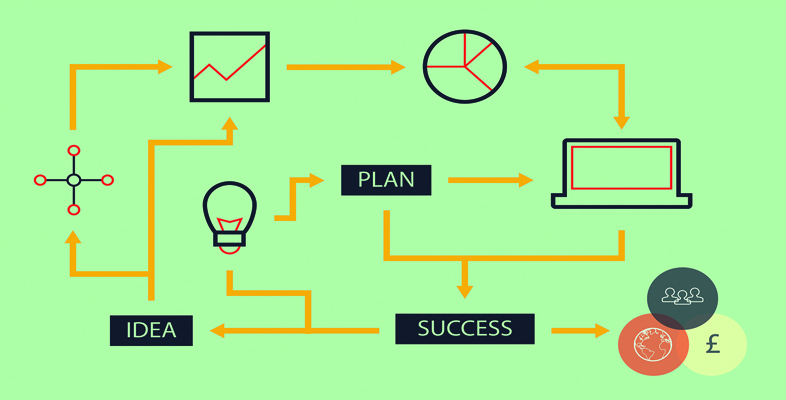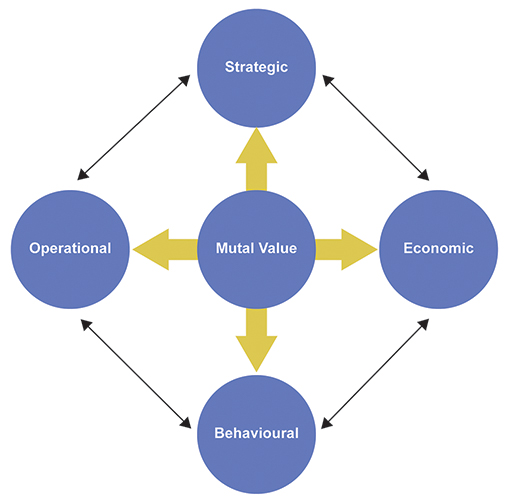2.1 Dimensions of value
Figure 2 shows one way of looking at how, as you think about your own business idea, you might increase value for customers across four dimensions.
Strategic value
The more aligned you are with your customers’ needs and wants, and the more relevant a place you have in their lives, the more likely you are to succeed. That means that your values, brand, ways of working and of course the product itself are a good fit with your target audiences.
Economic value
For your business, economic value means being able to achieve a price that exceeds the cost of providing the product or service being offered. This requires efficiency in the costs associated with sourcing and providing products and services, and serving and supplying customers. From the customer point of view it means paying a price they think is worth paying and that the value you offer is worth paying relative to alternative solutions to their need or the problem you are seeking to solve.
Operational value
Your customers will come into contact with your business in a variety of ways – sometimes referred to as customer touchpoints. Wherever and whenever they touch your business, there is an opportunity to reinforce the value of what is being offered (and if you think about it, also to detract from the value in the case of poor customer service). In today’s world where people are considered to be time poor, this means making it convenient and easy for customers to deal with you.
Reflection
Take a moment to reflect on how many suppliers or providers you deal with as a customer. How do they perform on this dimension of being easy to deal with? What is it they do – or even don’t do –that makes dealing with them good or bad?
Discussion
You may have thought of the opening hours, or convenient location, or even an option for self-service which means that you can deal with suppliers at the time best suited to you. You may also have thought about efficient processes – for example, you are ‘remembered’ as a returning customer and so don’t have to provide all your details or repeat your request. Or perhaps you appreciate the recognition or rewards for your loyalty which means that the company uses the data and information you have provided to good effect.
There are many ways to set up your organisation to provide a smoother, more effective experience for customers that not only add value to customers but differentiate you from others.
The whole banking industry has been turned upside down by the introduction of mobile banking and indeed it has attracted many new businesses into the sector, many of whom are not banks. Think of companies like Apple (with Apple Pay), and Amazon and Alibaba – both online retail companies –that have revolutionised how you pay for goods and services at the touch of your smartphone. You can move money around, pay for things, receive money, exchange it for other currencies and even use cryptocurrencies as a result of technology. The convenience of apps and cashless payments is for many people (customers and traders alike) infinitely more secure, efficient, convenient and cheaper than visiting a distant physical branch to make a deposit, withdraw cash, pay cheques in or exchange money. However, even with banking there are some transactions where the human touch is preferable to dealing with technology.
One further example of adding value and differentiating your business from others comes from how you and your staff behave to add value through the experience.
Behavioural value
You can probably remember occasions when the service of a member of staff in an organisation has left a good or bad impression. You will probably also remember how it made you feel – anything from satisfaction to delight to frustration and annoyance. The point is that for most businesses there is a real benefit to encouraging customer satisfaction and even delight. For one thing, happy customers come back, but moreover, delighted customers will tell other people.
The flip side to that is that unhappy customers tend to be more vociferous in telling people about bad experiences. In the interests of retaining customers and growing your business it pays to be attentive to customer expectations and the customer experience.
Next you will look at ways of optimising value for your business.

